Kiladze Natalia Valerievna
MOU Secondary School No. 27, Volgograd
Teacher primary grades
Cognitive game on traffic rules "Avtomozaika" (3-4 classes).
Objectives: Promotion of the rules road traffic among students and the prevention of child road traffic injuries.
Tasks:
Check and consolidate knowledge about traffic rules for cyclists.
To broaden the horizons of children in the field of bicycle history.
Build teamwork skills in a group.
Materials:
scoreboard and mosaic elements;
scoreboard for "Field of Miracles";
blanks of signs and markers.
The course of the event.
Org. moment
Ved. Today we will become participants in the educational game "Automosaic". To do this, we will split into 3 teams of 7 people.
Greetings from teams.
Ved.It's time to familiarize yourself with the rules of the game. The teams must assemble the car with 9 puzzle pieces as quickly as possible. In front of each team there is a board with a car outline. The game consists of three sectors (red, yellow and green) according to the difficulty of tasks.
Red sector - simple tasks and questions. They are estimated at only 1 point (the team receives 1 vehicle element).
Yellow sector - tasks and questions are more difficult, you can earn 2 points if you give correct answers (accordingly, the team receives 2 elements of the car).
Green sector -you need to apply a lot of knowledge, but the correct answer gives you as much as 3 points.
Ved. Clear morning along the road
Dew glistens on the grass.
Legs ride along the road
And two wheels are running.
The riddle has an answer -
This is my ... (bike).
Communication of the theme and goals of the game.
Ved. Our theme game program "The bike and everything about it."Many of you enjoy cycling on a sunny day. It is wonderful! But do each of you know and follow the rules of the road? How often negligent cyclists have an accident or become the cause of it! Today we will remember the rules of the road for cyclists and learn a lot interesting facts from the history of the bicycle.
"Do you know that…"
Bicycle translated from Latin means "swift".
On September 15, 1801, in the midst of the celebrations of the accession to the throne of Alexander 1, an unusual vehicle appeared on the square in front of the Moscow Kremlin. Of course, you guessed it was ... (bicycle).
The first bicycle with pedals and a steering wheel was built in Russia by the inventor Artamonov.
Drawing of lots.
Ved.According to the results of the draw, the choice fell on the team ... Guys, your move, you choose any block and any sector.
The game "Automosaic"
Block "Alphabet of a pedestrian".
Red sector (1 point)
A pedestrian is ...
A. A person doing work on the road.
B. Person walking on the sidewalk.
B. Person in the vehicle.
What requirements of the traffic rules must a pedestrian follow when crossing the road?
A. Move at right angles.
B. Do not stop on the road unnecessarily.
B. Do not eat ice cream.
3. Is it dangerous to walk on the sidewalk edge?
A. Not hazardous as the sidewalk is for pedestrians.
B. Not hazardous, as vehicles should not travel close to the sidewalk.
B. Dangerous, as there is a danger of being hit by nearby vehicles.
Yellow sector (2 points)
What is sidewalk?
A. Cyclist road.
B. Pedestrian road.
B. Road for transport.
What should a pedestrian be guided by if a traffic controller's gesture contradicts the traffic light requirement?
A. By the gesture of the traffic controller.
B. Traffic light signal.
B. Act at your own discretion.
3. What does the flashing green traffic light mean?
A. The traffic light is defective.
B. Green signal time expires.
B. No traffic.
Green sector (3 points).
How should a pedestrian column move along the roadway?
A. On the left side of the road, towards the moving traffic.
B. On the right side of the road, in the direction of traffic.
Why is it possible to ride a bike in the dark without a lamp on?
(A trick question: you can't ride in the dark without a flashlight, even on a bicycle)
Block "Do you believe ..."
Red sector (1 point)
… that you can only ride a bicycle on the roadway from the age of 14? (Yes).
… that a child under 10 years old can be transported on a bicycle. (No).
… what is the first thing to check the brakes before riding a bike? (Yes).
Yellow sector (2 points)
… that the road sign "Crossing the bike path" belongs to the prohibition group of signs? (No warning)
… that a double-decker bike was built in England? (Yes).
… that a cyclist can not stop at an intersection at a red light if there are no vehicles and he does not create an emergency? (No).
Green sector (3 points).
… that for the first time in Russia the rules for cycling were developed in Moscow. (No, in St. Petersburg).
… that a bike for 9 riders is called a noniplet. (Yes).
… that the first bike path was built in Paris? (Yes).
Ved.Around 1493, the genius artist Leonardo da Vinci drew a drawing of a machine that was powered by pedals. True, some scholars claim that the drawing belongs to one of the famous artist's students.
Block "Agile artists"
Red sector (1 point)
"Find the mistake"
Pupils receive road signs drawn. Task: find errors.
Yellow sector (2 points)
"Paint the signs"
Students receive black and white road signs. Task: to color them correctly.
Green sector (3 points).
"Draw the sign"
Pupils receive the outlines of road signs. Task: to finish the signs.
Ved.The largest bike is 3.4 meters tall and has a front wheel diameter of 3.048 meters. It was created in 1989 by Dave Moore from the USA. And it was tested on June 4 of the same year by Moore's compatriot Steve Gordon.
Block "Field of Miracles"
Students can open any 2-3 letters. Assignment: guess the word.
Red sector (1 point)
What is the name of the great Renaissance artist who drew the sketch of the bicycle?
Yellow sector (2 points)
Guess one of the first bike names.
Green sector (3 points).
Guess the name of a sports two-seater bike.
Ved.The longest bike is tandem. Its length was 20.4 m, and it easily fit 35 cyclists. On April 20, 1979, this chulo started on its first journey. True, the bike traveled only 60 km, after which, with screams and an eerie roar, all 35 participants in the grand race fell on the asphalt. The lack of coordination of the team affected. By the way, it is impossible to lift this tandem alone, since it weighs 1100kg.
But the New Zealander Terry Tesman built a bicycle 22.24 meters long, which weighed 340 kg, his brainchild overcame a whole 246 meters on February 27, 1988.
Summarizing. Reflection.
Ved.So our today's game is over. Let's summarize. The winner was the team ...
But I think that there are no losers in this game, everyone can consider himself a winner.
It is important to remember and follow the Traffic Rules: for a cyclist, a pedestrian, and a driver! Our life and the lives of the people around us depend on it.
Interactive game in the elementary school "Field of Miracles" according to traffic rules
Down with boring conversations. It is more interesting to teach children safety through exciting games and quizzes.
The game "Field of Miracles" according to the rules of the road is designed for students in grades 2-4.
Goal: To consolidate knowledge about the Rules of the road.
The game is recommended for students in grades 1-4.
Rules of the game:
The game takes place in three rounds, in each of which 3 players participate.
The presenter guesses the word indicated on the scoreboard. Players take turns spinning the reel and guessing the letters that make up the word. The winner is the player who will guess the word faster. A game with spectators and a super game are envisaged.
Game progress.
I. Organizational momentLeading:
- Hello, dear guys! Today we have an unusual lesson, today we will become participants famous game "Field of Dreams".
II. Game goal setting.
Leading:
- Whoever thinks that he knows all the rules of traffic rules and knows how to use them, clap your hands.
- Who knows all the rules, but does not know how to apply them correctly, stomp your feet.
- Whoever does not know everything and does not know how to do everything, raise your hands up and wave them.
- Guys, I see that you already know a lot. So we start the game.
III. Game "Field of Miracles"
Leading:
Attention is the first question qualifying round... In order to answer you need to raise your hand. A cry for an answer is not accepted.
What a miracle - a long house!
The windows glow around.
Wears rubber shoes
And it feeds on gasoline.
(Bus)
And so we got the top three players.
Attention is the task of the first three players.
Task for the first "three" players.
Self-propelled four-wheeled
vehicle (Car)
And playing with the audience
Public transport mode (Bus)
Leading:
And we continue the questions of the second qualifying round, I remind you that you need to raise your hand to answer.
Question of the second qualifying round.
Miracle wand, she
Everyone is familiar, everyone can see:
It is noticeable during the day, and in the evening -
Illuminated from the inside.
We have identified the 2nd three players.
Task for the second "three" players.
Attention is the question of the 2nd three players.
Place of intersection, abutment
or forking roads at the same level. (Crossroads) And
Playing with the audience
Pedestrian road (Sidewalk)
Leading:
Third qualifying round. Attention, the answer is accepted only with a raised hand.
Question of the third qualifying round.
Who keeps order on the road?
(Adjuster)
We have identified the third three players.
Task for the third three players
Attention question!
It happens aboveground, underground, aboveground (Transition)
Leading:
The final.
The finals are attended by the best experts on traffic rules. Let's applaud them.
Attention question:
Intruders are afraid of him (Inspector)
The winner is undoubtedly ... let's congratulate him with applause!
Anastasia Vatekhova
Presentation "Interactive traffic rules game for older children preschool age»
For older childrenpreparatory for school age
goal: creating the necessary conditions in a preschool educational institution to prevent child injuries on the roads, increase the competence of teachers in ensuring safe life children.
Educational tasks:
Consolidate knowledge children about transport, about types of transport;
To fix the rules for using public transport;
Consolidate knowledge about the dangers that children may face on the street;
Consolidate knowledge children about signals and types of traffic lights;
Strengthen the ability to distinguish and understand the meaning of some road signs;
Improve the skills of behavior on the road through the study of road signs;
Strengthen the skill children apply the knowledge gained about the Rules of the road in free activities children.
Developmental tasks:
Develop the ability to recognize the types of land transport for various reasons;
Review the rules of conduct on the street. Traffic Laws;
Develop attentiveness, observation when completing a task;
Develop logical thinking;
Developing speech is proof.
Educational tasks:
Educate children respectful attitude to the Rules of the road and the desire to follow them;
To foster a culture of behavior in order to prevent child road traffic injuries;
To cultivate the ability to listen carefully, not to interrupt, supplement and correct the mistakes of your comrades.
Correctional tasks:
Learn to compare, highlight the main thing, the essential;
Develop the ability to group objects;
Nurture sustained attention;
Improve auditory perception;
Expand and activate vocabulary preschoolers, introduce new in words: traffic controller, baton, partner;
Develop positive behavioral skills;
Coordination of speech with movement.
Related publications:
Currently in practical work multimedia technologies are actively used with children. The use of ICT during educational.
Interactive didactic game for senior preschool children "Russian Holidays" Passport of the game "Russian Holidays" Criteria Contents Game name, author "Russian Holidays" File name Urina_TI_2 Age category.
Interactive didactic game for the speech development of older preschool children "Help the hedgehog" INTERACTIVE DIDACTIC GAME FOR SPEECH DEVELOPMENT OF ELDER PRESCHOOL CHILDREN "HELP THE HEDGEHOG". Developed by the teacher MBDOU.
Tasks: to consolidate the acquired knowledge of children on the topic of transport; develop logical thinking, speech, memory; activate the thinking.
Interactive game "School of Economics" for senior preschool children. Presentation Interactive game "School of Economics" for senior preschool children.
Interactive FEMP simulator game for older preschool children Progress of the Game The first slide contains the topic of the interactive game and the goal. For children, the game starts immediately in show mode. The start of the game is followed.
The sun does not rise twice a day, and life is not given twice.
A.P. Chekhov
Remember - a child's life can depend on a mistake in the lesson!
According to the Federal Law “On Road Safety”, the main principles of ensuring road safety are: priority of the life and health of citizens participating in road traffic over the economic results of economic activity; priority of the responsibility of the state for ensuring road safety over the responsibility of citizens participating in road traffic; observance of the interests of citizens, society and the state.
The problem of accidents in transport - the Government of Russia named one of the most acute, threatening the national security of the country. Over the past 10 years, more than 2 million people have suffered on our roads, more than 300 thousand have died.
The rate of child road traffic injuries has remained high for many decades. In the past years, there has been an increase in the number of deaths and injuries among road users under the age of 16. More than half of the affected children were schoolchildren aged 7 to 14. Preserving the life and health of children is one of the main goals and raison d'être of human society. The Convention on the Rights of the Child affirms the inalienable right of every child to life and obliges the state to ensure
"as far as possible, the survival and healthy development of the child" (Art. 6).
Prevention of injuries in children is possible not only if they are specially prepared for safe life in the transport environment, but also for the formation of a high level of transport culture in them.
In the Russian Federation for 12 months of 2012, 187 098 road accidents were registered, in which the death toll was 25 695 people, and the number of wounded was 237 471.
The numbers make you wonder: every year as many people die on the roads of Russia as there are residents in some small towns. It’s scary to imagine that a whole city is dying in a year.
The precondition for the creation of this product was the contradictions that have developed at present between
The increasing level of road traffic injuries and the attitude of road users to the study and observance of traffic rules;
The need to form solid knowledge, skills and abilities and the lack of educational and methodological aids, incl. electronic, for studying traffic rules at school;
Knowledge and skills acquired by a student at school, and habits transmitted from adult road users (parents, acquaintances, teachers).
Another important condition was my personal interest in the designated problem, due to my personal work experience, the desire to educate students in a culture of safe behavior on the road, to create conditions in the classroom and in extracurricular work for successful activities and a conscious attitude of students to the study and application of knowledge of the Rules of the Road movement.
In the lessons on the study of the Rules of the Road, multimedia technology, an interactive whiteboard, is actively used, which allows students not only to study theory, but also to create, solve situational problems. The school detachment of young traffic inspectors together with the traffic police conduct regular raids. The purpose of these raids is to prevent DDTT, as well as to collect information about the actions of road users. In the future, this information is used in the lessons.
Within the framework of the pivotal school on life safety, for a number of years I have been conducting seminars with primary school teachers of the city of Murom on the methodology of teaching the Rules. This allows us to develop continuity in the study of traffic rules, and to achieve a unified interpretation.
An interested student learns better, therefore, work should begin with the formation of educational motivation for students. Motivation determines the purposefulness of the activity, its organization and stability. The child's interest in new things is a necessary prerequisite for learning.
goalcreating this product, increasing the motivation of students to study traffic rules through the use of interactive and game forms of education.
Tasks:
- improve the quality of knowledge and practical skills of safe behavior on the road;
- to teach students purposeful search, systematization of information, the ability to apply search and selection methods;
- to draw the attention of all participants in the educational process, the public, interested departments to the problem of DDTT;
- to include teachers, students, parents in solving this problem;
The presentation contains 29 slides (1 slide - title page, 2 slide - navigation system by blocks, from 3 to 27 slides educational material, 28 slide - list of game results, 29 slide - information about the author). Slide 2 - block navigation system, allows students to select blocks of questions, the number of the question in the block.
The educational material includes 5 blocks, road elements, pedestrian duties, public transport passenger duties, road signs for pedestrians, puzzles on the topic of traffic rules. This presentation can be used when studying new material, in extracurricular activities (conducting a quiz on the knowledge of traffic rules), in order to consolidate the knowledge of the rules.
This product is a methodological guide for primary school teachers, teachers - organizers of life safety, working in grades 5-6. The work was done taking into account the age characteristics and capabilities of younger students in an interesting way.
I used the presentation when conducting a lesson in the study of new material, a lesson in consolidating the knowledge gained, in an extracurricular event. The alternation of demonstration of theoretical material and conversation with students helps to achieve the set goals. It was also demonstrated at the school-wide parent lecture hall, since the example of parents is the main resource for teaching a child to behave safely on the road. Therefore, only the joint work of school teachers, students and their parents can achieve positive results.
With the correct answer, you will move on to the next question. Otherwise, you will know your result. To go, click on the answer.
- With the correct answer, you will move on to the next question. Otherwise, you will know your result. To go, click on the answer.
- 1. Mostovaya.
- 2. Sidewalk.
- 3. Cycle path.
- You have scored one point.
- With such knowledge, it is dangerous to go outside. This is dangerous for your life.
- Where should pedestrians walk if there is no sidewalk?
- 1. On the right side of the curb.
- 2. On the right side of the road.
- 3. On the left side of the road, towards traffic.
- You have scored 2 points.
- You urgently need to learn the rules of the road.
- How should a pedestrian walk on the sidewalk?
- 1. Sticking to the left.
- 2. Sticking to the right side.
- 3. Sticking to the middle.
- You have scored 3 points. It's a pity, but you urgently need to repeat the traffic rules
- What should pedestrians do if during the crossing of an intersection the green signal of the traffic light changes to yellow, and you did not have time to cross the road?
- 1. Quickly cross the street.
- 2. Return to the sidewalk.
- 3. Stop at the center line and wait for the green light.
- You scored 4 points. It's a pity, but your life is in danger and you urgently need to repeat the traffic rules
- The bus stopped at a stop, you got off. How to properly cross the road when exiting transport?
- 2. Behind the bus.
- 3. Ahead of the bus.
- You scored 5 points. It's a pity, but you are still in danger. I kindly ask you to repeat the rules of the road.
- Whom do pedestrians obey if the intersection is regulated by traffic lights and a traffic controller?
- 1. Traffic lights.
- 2. Signals of the traffic controller.
- 3. Everything is correct.
- You have scored 6 points. It's a pity, but you are still in serious danger. I kindly ask you to repeat the rules of the road.
- At what age is it allowed to ride a bike on the road?
- 1. From the age of 14.
- 2. From 13 years old.
- 3. From 12 years old.
- You scored 7 points. It is a pity, but if you are under 14, then it is too early for you to cycle on the road.
- How far from the right edge of the carriageway is cycling permitted?
- 1. Not more than 0.5 m,
- 2. Not more than 1.0 m.
- 3. No more than 2.0 m.
- You scored 8 points. It’s a pity, but it’s too early for you to cycle on the road.
- Is road side biking allowed?
- 1. No.
- 2. Permitted if it does not interfere with pedestrians.
- Everything is correct.
- You scored 9 points. It’s a pity, but it’s too early for you to cycle on the road.
- Is it allowed to carry a passenger on a bicycle?
- 1. No.
- 2. Allowed for a child under the age of 7 in an extra seat.
- 3. Allowed for all without exception.
- You have scored 10 points. It's a shame, but it's too early for you to cycle out onto the road.
- What part of the street is pedestrianized?
- 1.Side.
- 2. The sidewalk.
- 3. Everything is correct
- You have scored 11 points. It's a shame, but it's too early for you to go out without an adult.
- Which side of the sidewalk should pedestrians walk on?
- 1. On the left.
- 2. On the right.
- 3. Everything is correct.
- You have scored 12 points. It's a shame, but it's too early for you to go out without an adult. You are a danger to other pedestrians.
- What traffic signal prohibits traffic?
- 1. Red
- 2. Green.
- 3. Yellow.
- You have scored 12 points. It's a shame, but it's too early for you to go out without an adult. You don't even know the traffic signals.
- Which side of the road do pedestrians walk on when there is no sidewalk?
- 1. On either side.
- 2. On the right side, towards the traffic.
- 3. On the left side, towards the traffic.
- You scored 13 points. It's a shame, but it's too early for you to go out without an adult. you are a danger to other pedestrians.
- What geometric shapes do road signs have?
- 1. Triangle, square, circle, rectangle.
- 2. Triangle, square.
- 3. Square, circle, rectangle.
- You scored 14 points. It is a great pity that you were mistaken. But not knowing road signs is very dangerous.
- What is the name of the sign that is installed near schools and kindergartens?
- 1. "School"
- 2. "Children's institution".
- 3. "Children"
- You have scored 15 points. It is a great pity that you were mistaken. But not knowing road signs is very dangerous.
- What is the name of the road crossing?
- 1. Crossroads.
- 2. Detour.
- 3. Everything is correct.
- You have scored 16 points. It's a shame that you were wrong. But you don't know the most dangerous place on the road.
- The most dangerous places on the city streets?
- 1. Crossroads.
- 2. Everything is correct.
- 3. The road.
- You have scored 17 points. It is a great pity that you were mistaken. But you do not know the most dangerous places on the road.
- How many crosswalks are there at the intersection?
- You have scored 18 points. It is a great pity that you were mistaken. Refer to road traffic regulations.
- Our faithful friends and assistants on the streets of the city.
- 1. Drivers and police officers.
- 2. Pedestrians.
- 3. Road signs.
- You have scored 19 points. It's a shame that you were wrong. Refer to traffic regulations.
- Name the parts of the road.
- 1. Carriageway, roadside, ditch.
- 2. Carriageway, ditch.
- 2. Ditch.
- You have scored 20 points. It's a shame that you were wrong. Refer to road traffic regulations.
- What are the people who use transport called?
- 1. Drivers
- 2. Pedestrians.
- 3. Passengers.
- You scored 21 points. It is a great pity that you were mistaken. Refer to road traffic regulations.
- What does the word "pedestrian" mean?
- 1. Walking.
- 2. Walking step.
- 3. Walking on a pedestrian crossing.
- You scored 22 points. It's a shame that you were wrong. Refer to traffic regulations. Your result is very high.
- What kind of transport can you jump from on the go?
- 1. From the bus.
- 2. From the car.
- 3. From the plane.
- You scored 23 points. It is a great pity that you were mistaken. If you don't have a parachute, jumping off on the move is deadly.
- Can passengers be transported on a bicycle along the streets?
- 1. Yes.
- 2. No.
- 3. Adults only.
- You scored 24 points. It's a shame that you were wrong. You missed quite a bit.
- The bus stopped at a stop, you got off. How to properly cross the road when exiting transport?
- 1. Only after the departure of the bus (trolleybus).
- 2. Behind the bus.
- 3. Ahead of the bus.
- You scored 25 points. It's a shame that you were wrong. Your life is in danger. You missed quite a bit.
- Can a car that does not move create a danger?
- 1. Maybe.
- 2. Can't.
- 3. I don't know
- You scored 26 points. It's a shame that you were wrong. Your life is in danger. You missed quite a bit.
- Well done!!!

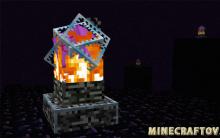
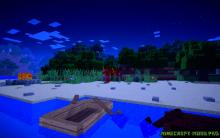

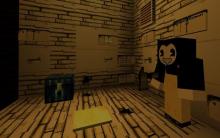
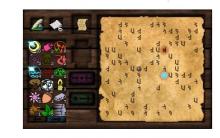
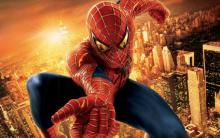




Mods for Minecraft (Minecraft) What mods are included in the assembly
Download mods for world war 2
System Requirements CS: GO Minimum System
Getting the second prof l2
Fifa 18 system requirements for laptop